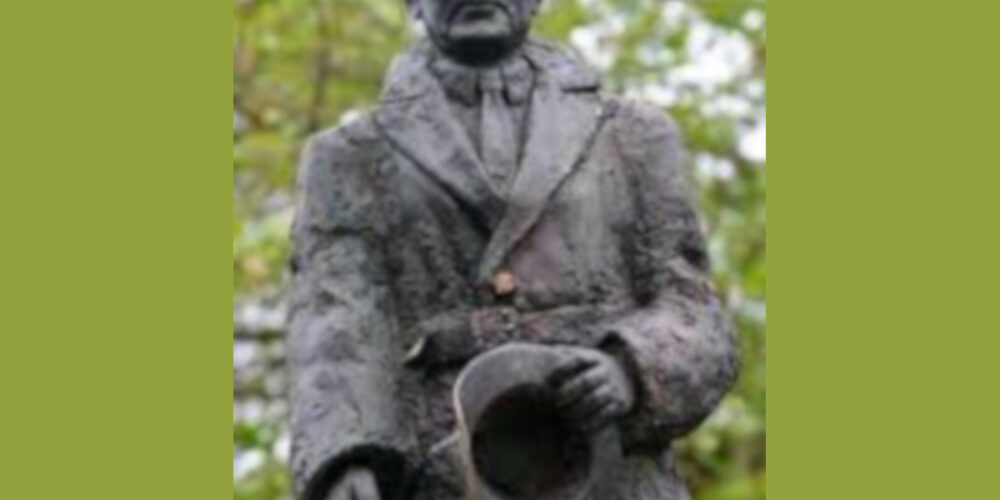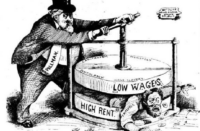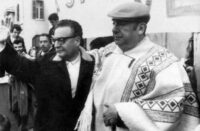In July 1940, after the fall of France and with a German invasion of Britain seeming imminent, the IRA leadership explained their attitude to the war in a public statement. In it they made it clear that if German forces arrived in Ireland they would come “as friends and liberators of the Irish people.” This was because, the IRA asserted, the “Third Reich” was the “guardian and energizing force of European policy” and was committed to the construction of a “free and progressive Europe.”
Indeed the IRA stressed that the Germans desired “neither territory” nor “economic penetration” in Ireland, only the “freedom of civilized nations from the intolerable yoke of Britain.” As evidence of this they pointed to “Herr Hitler and Signor Mussolini’s” recent success in installing a “Catholic government” in Spain, against—they claimed—British opposition.
Responding to the statement in Irish Workers’ Weekly, Seán Murray asked whether “any follower of Pearse or Connolly [could] seriously entertain the notion that the issue in this war is for a free and progressive Europe?” While recognising the hypocrisy of British imperialism, Murray argued that the IRA’s statement betrayed a “total misunderstanding of the issues at stake in this war” and that their stance aligned them with the “slayers of Republicanism and nationhood on the Continent [and] with the governing autocracies of Italy, Spain and Germany, against the revolutionary movements of these countries.”
Furthermore, the Nazi “theory of the superior race” and “doctrine of overlordship” made it clear what their real attitude to “subject nations” would be.
This debate remains relevant, as the recurring controversies over the memorial to the IRA leader Seán Russell illustrate. Russell, who had led the IRA from 1938, died in August 1940 on board a German U-boat, returning from discussions with Nazi leaders about aid for his organisation.
This summer his monument in Fairview Park (which also commemorates all the republican dead of the 1940s) was vandalised, allegedly by anti-fascists. This occurred shortly after the statue had been criticised by Fine Gael’s Leo Varadkar. Many republicans responded by closing ranks, suggesting that Russell only sought foreign aid in the tradition of Tone and Casement and was in no sense a Nazi “collaborator.”
The opportunism of Fine Gael aside, there seemed little willingness to examine what exactly the IRA’s relationship with the Nazis amounted to, or indeed the political context in which the statue to Russell was unveiled.
The reality was that Russell’s accession to leadership of the IRA marked a move to the right by the organisation. While Russell was notably uninterested in political debate, under his tutelage men with pro-Nazi views, such as James O’Donovan, gained prominence within the IRA. Republicans were quick to remind Fine Gael of its fascist history, but there seemed little awareness among them that during 1940 IRA leaders had themselves been keen to enlist the aid of the former Blueshirt leader Eoin O’Duffy.
By that year republicans were mixing with former Blueshirts in a variety of pro-German organisations. Throughout the war fascist groups, notably Ailtirí na hAiséirghe, made determined efforts to influence the IRA, with some success. Indeed the notorious speech by the Aiséirghe supporter Oliver J. Flanagan TD, in which he praised Nazi policy towards the Jews, was part of an attack by him on government moves against the IRA.
The IRA’s own rhetoric in that period went beyond simply hoping for a British defeat and echoed Nazi themes, particularly anti-Semitism.
After 1945, despite the realities of Nazi rule being laid bare, there was little desire to reflect on this. Hence, in 1951 the unveiling of the monument to Russell was accompanied by commentary that celebrated his time in Nazi Germany. An account in the United Irishman described in detail Russell’s interaction with leading Nazis. It even claimed that the IRA leader and his organisation had been given a significant role in “Operation Sealion,” the planned invasion of Britain.
Many of Russell’s contemporary defenders note that since he had visited the USSR in 1925 to seek Soviet aid but was not a communist his visit to Berlin should be judged in the same light. The political context was very different however.
Republicans had been broadly sympathetic to the Soviet Union after 1917, and the Comintern was pledged to support uprisings against colonial rule. The Nazis made no such claims to anti-imperialism. Indeed until the late 1930s the republican press had denounced the Nazis precisely because of their reactionary politics, An Phoblacht condemning the Luftwaffe’s bombing of Guernica, for example.
Russell and his allies chose to ignore all of this. Indeed Russell’s opponents within the IRA alleged that his leadership bid was supported by funding from Nazi sources. Russell’s visit to the USSR went unmentioned during the unveiling of his statue in 1951, presumably because it would have been politically embarrassing in the intensely anti-communist atmosphere of the day. Yet, in contrast, his being feted by the Nazi leadership was considered unproblematic and indeed presented as a measure of his importance.
Raising these issues is not a matter of retrospective moralism. As Seán Murray’s article illustrates, they were the subject of debate at the time. Russell himself may not have cared very much what the Nazis stood for, but seeking an alliance with them had potentially disastrous consequences. Republicans might do well to discuss what exactly welcoming the Germans as “liberators” might have meant, and how, and why, the IRA had ended up in that position.






